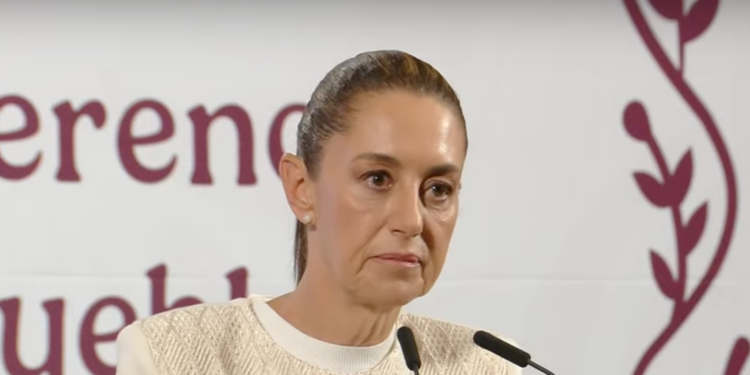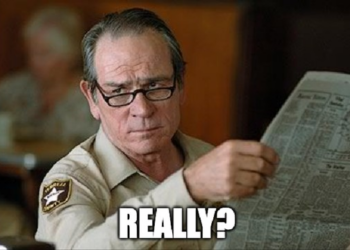When President Donald Trump demanded the “eradication” of the cartels, Americans rallied behind him.
Franklin Roosevelt described cartels more than eighty years ago as “weapons of economic warfare” and defined “cartel practices” as those that “restrict the free flow of goods in foreign commerce.” In parts of Europe, particularly Nazi Germany, a guild, anti-laissez-faire mindset prevailed in coal, petroleum, steel, and other industries. Roosevelt regarded this economic protectionism as engendering hostility between nations. He instructed Secretary of State Cordell Hull to make the elimination of cartels a priority for the postwar world.
From the vantage point of a decade earlier, the president’s order would be terribly confusing. Roosevelt, after all, created cartels through the National Industrial Recovery Act from the outset of his New Deal. John T. Flynn memorably described the garment industry’s National Recovery Administration code enforcers in The Roosevelt Myth: “Flying squadrons of these private coat-and-suit police went through the district at night, battering down doors with axes looking for men who were committing the crime of sewing together a pair of pants at night.” In the U.S., Germany, and Italy during the 1930s, cartel economics were the rage.
From the perspective of today, confusion also greets President Roosevelt’s cartel concerns. We no longer associate cartels with crony capitalism aimed at controlling prices through collusion or the elimination of competition. In 2025, Americans associate cartels with, strangely enough, drugs, which always and everywhere tend to distort meaning. They certainly do with the word “cartel.”
Cartels, in other words, ain’t what they used to be.
On the first day of his second term, President Donald Trump declared drug cartels terrorist organizations. He wrote in this executive order:
The Cartels functionally control, through a campaign of assassination, terror, rape, and brute force nearly all illegal traffic across the southern border of the United States. In certain portions of Mexico, they function as quasi-governmental entities, controlling nearly all aspects of society. The Cartels’ activities threaten the safety of the American people, the security of the United States, and the stability of the international order in the Western Hemisphere. Their activities, proximity to, and incursions into the physical territory of the United States pose an unacceptable national security risk to the United States.
Trump’s day-one declaration differs from some of the opening words of his Mexican counterpart. “The war against el narco will not return,” Claudia Sheinbaum said within days of assuming office. Her statement, or at least what it symbolized, in a sense birthed Trump’s executive order. A Mexican government that maintained order would not face the prospect of economic sanctions and military action from its mighty northern neighbor. Enforce the law or we will, Trump effectively tells Mexico.
About a month after Trump’s executive order, Secretary of State Marco Rubio specifically designated eight Latin American criminal organizations as terrorist groups.
The collective power of these groups illustrates the degree to which Mexico operates as a narco-state.
These include six Mexican groups: Sinaloa Cartel, reportedly the oldest of all of those designated; the Jalisco New Generation Cartel, whose 2011 coming-out party saw it dump thirty dismembered bodies around Vera Cruz; the Northeast Cartel, which controls a small but crucial border area; the Gulf Cartel, which similarly operates on the border; the Michoacán Family, which controls about three dozen municipalities in central Mexico; and, not to be confused with a similarly anti-Trump group in the United States, La Resistencia. The collective power of these groups illustrates the degree to which Mexico operates as a narco-state.
Atop the six Mexican cartels, two Latin American groups more familiar to Americans landed on the Trump administration’s list: Tren de Aragua, the Venezuelan gang that made headlines by terrorizing an apartment complex in Colorado last year, and MS-13, or Mara Salvatrucha, an El Salvadoran gang that actually started in the United States.
The bold move won support in unexpected quarters. Senator Richard Blumenthal (D-Conn.), for instance, told Roll Call that he had petitioned President Joe Biden to declare the cartels as terrorist outfits to no avail.
Expected quarters panned the decision.
“If they declare these criminal groups as terrorists,” Mexican President Sheinbaum explained at a press conference, “then we will have to expand our U.S. lawsuit.” She spoke of litigation against U.S. gun manufacturers and the possibility of a charge of “complicity” against the firearms makers. Mexico, with less than 40 percent of the population of the United States, experiences more than double the number of murders annually. In a country hosting one legal gun store, the United States and its relatively lax gun laws become a familiar scapegoat (as the cartels become a familiar scapegoat, some argue, for the drug abuse of Americans) for the violence south of the border.
In Sheinbaum’s defense, although the cartels certainly terrorize, they do not meet the definition of terrorism used for decades by various U.S. government entities. The United States Marine Corps, for instance, defines terrorism as “the calculated use of unlawful violence or threat of unlawful violence to inculcate fear; intended to coerce or to intimidate governments or societies in the pursuit of goals that are generally political, religious, or ideological.” The cartels, which undoubtedly inculcate fear, do not pursue political, religious, or ideological goals. Like Al Capone, Pablo Escobar, and Reggie Kray, they find motivation in money.
And the money flows. In 2021, the Mexican cartels, by acting as both gatekeeper and guide on border crossings, banked an estimated $13 billion off the human-smuggling trade. Estimates of annual drug revenue for the Mexican cartels vary wildly from about $13 billion to $50 billion. The dollar amounts make the terrorist–criminal distinction somewhat moot. It turns out men will kill and die for lucre just as surely as they will for abstract causes. So, while Trump’s orders and threats may catalyze change at the political level in Mexico, people already committed to a deadly profession — some so committed that they tattoo their faces — that can transform a pauper into a millionaire do not look likely to surrender anytime soon. Violent men may need greater violence to dissuade from evildoing.
“We’re not worried,” a cartel member told an embedded ABC News reporter. Rather than bad for business, Trump’s policy shift, the Mexican gangsters argued, necessarily increases demand for what they provide. One explained about migrants, “They’ll need our services more.”
Trump perhaps misclassifies these criminals as terrorists. But this error seems more understandable than Sheinbaum’s treatment of criminals as law-abiding citizens. Of course, semantics seems not the primary concern behind Sheinbaum’s objections to the executive order.
The cartels not only contribute tens of billions of dollars to the Mexican economy by trafficking drugs and humans (Mexicans in the U.S. remit more than $60 billion annually), but they control massive swaths of the country as well. The terrorist designation could mean the Department of the Treasury penalizes those in business with the cartels, the Central Intelligence Agency broadens its activities in Mexico, and the U.S. military fires missiles at cartel targets.
Sheinbaum, understandably, does not want that. Americans, understandably, do not want the influx of illegal aliens and poisons brought to them by the cartels. Something must give. The situation is no longer tenable.
“We don’t believe that the terrorist designation is helpful,” insists Sheinbaum. But evidence indicates that the terrorist designation, along with the threat of tariffs, has been very helpful — perhaps not to Sheinbaum but certainly to the United States. Her talk last fall about the war against el narco not coming back seems, in retrospect, quite premature. She now talks a different talk and walks a different walk.
On February 17, Mexico announced the seizure of 440 pounds of methamphetamine in Sinaloa. This highlighted a two-week period in which the government reported, according to CBS News, the seizure of 4.9 tons of methamphetamine, 453 kilos of cocaine, and 55 kilos of fentanyl. Whether or not the numbers accurately reflect the amount seized, the very loud manner in which they were promoted demonstrates that Mexico understands the seriousness of Donald Trump’s threats, explicit and implicit.
The drug busts represent one instance of the Mexican government pirouetting on policy since Trump’s inauguration. Under threat of draconian tariffs, Mexico unleashed 10,000 troops to combat smuggling. The country welcomed U.S. Army Green Berets to train its Naval Infantry Marines to combat the fentanyl trade. Sheinbaum also admitted to requesting U.S. drone surveillance conducted by the CIA in her own country; she characterized this as standard operating procedure. She even launched a “Mexico Embraces You” program to welcome back fellow countrymen deported from the United States.
Maybe all this, and not bombing Tijuana or imposing 25 percent tariffs on the nation, foreshadows Trump’s endgame. He wants Mexico not so much to do his dirty work for him as to clean up its own house.
Donald Trump famously failed to get Mexico to pay for a border wall. He succeeds so far in prompting Mexico to conduct narcotics busts, pay for proper training for its military, and engage in anti-smuggling operations. Mexico paying for a wall is better publicity. What Mexico pays for now under threat from the American president might amount to better policy.
Subscribe to The American Spectator to receive our spring 2025 print magazine.


![NYC Tourist Helicopter Falls into Hudson River, Siemens Executive and Family Among Those Killed [WATCH]](https://www.right2024.com/wp-content/uploads/2025/04/NYC-Tourist-Helicopter-Falls-into-Hudson-River-Siemens-Executive-and-350x250.jpg)






![Green Day’s Cringe Trump Diss Ends in Fire and Evacuation [WATCH]](https://www.right2024.com/wp-content/uploads/2025/04/Green-Days-Cringe-Trump-Diss-Ends-in-Fire-and-Evacuation-350x250.jpg)
![Red Sox Fan Makes the ‘Catch of the Day’ with Unconventional ‘Glove’ [WATCH]](https://www.right2024.com/wp-content/uploads/2025/04/Red-Sox-Fan-Makes-the-‘Catch-of-the-Day-with-350x250.jpg)
![Bikini Clad Spring Breakers Prove Our Education System is Failing Students [WATCH]](https://www.right2024.com/wp-content/uploads/2025/03/Bikini-Clad-Spring-Breakers-Prove-Our-Education-System-is-Failing-350x250.jpg)





